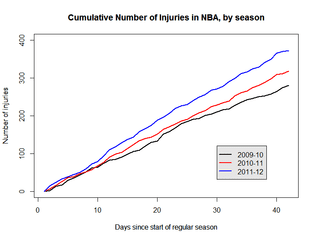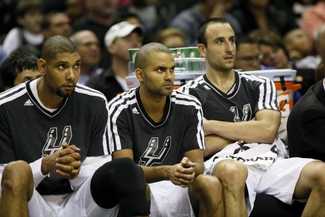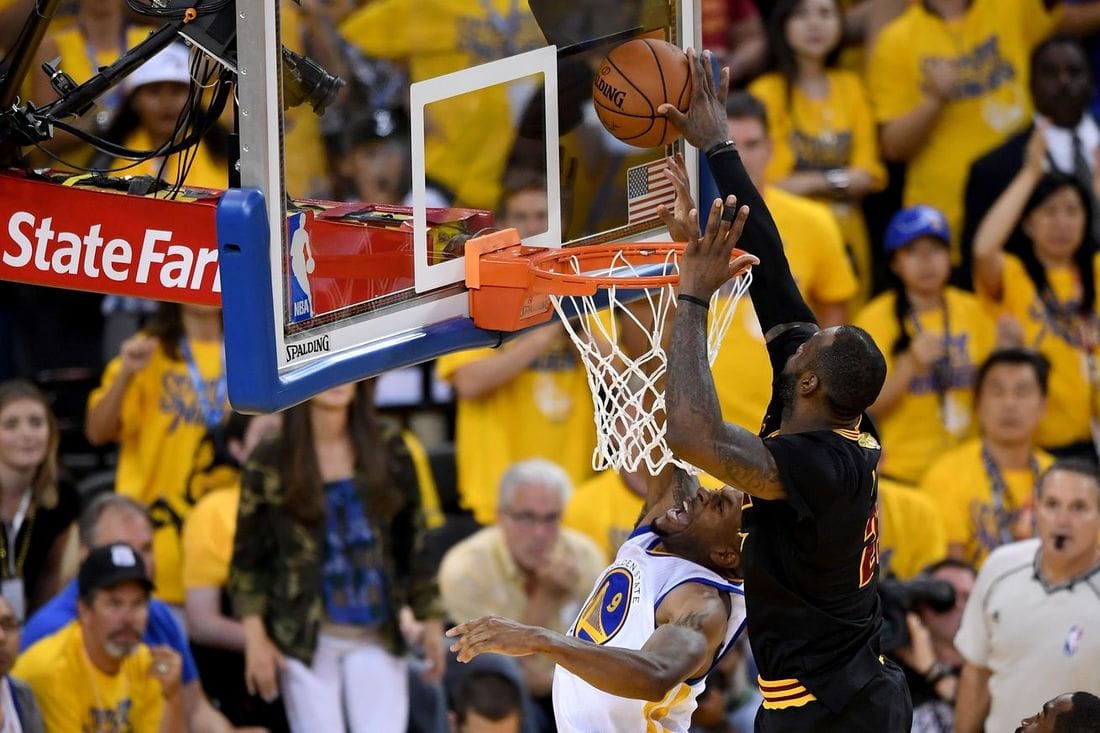|
April 28th, 2012 As Derrick Rose collapses, clenching his left leg, the city of Chicago is quickly left in despair. Whether they realize it or not, on average, NBA Finals losers have suffered 2.5 more injuries to central players than their victorious opponents. Only the Bulls of 1996 (Tony Kukoc) and the 2012 Heat (Chris Bosh) have won with key players injured. And they had Michael Jordan and LeBron James, respectively. Health literally wins championships in the NBA. At this point, Rose is just one of many who have experienced season-ending injuries during this abbreviated, but condensed, lockout season: Stephen Curry, Iman Shumpert, Baron Davis, Dwight Howard, Ricky Rubio, Chauncey Billups--the list goes on.
Back-to-Back Brutality Playing two games in the same amount of days is a part of the NBA. Teams have been doing it for decades, so what's the big deal? Well, firstly, statistics have exhibited that teams play significantly worse on the latter half of two straight games. In fact, teams playing under that circumstance win just 46.55% of their games. Conversely, teams with at least one day off between games win 51.06%. Maybe this is partially due to the fact that, according to nyloncalculus.com, players literally take significantly worse shots with no days rest in between games. This makes sense, and many players can see it in their own play: for example Damian Lillard, who noted that with more rest, he would "be able to play at a higher level... [he] would have more energy and bounce to his step. Sometimes you can be worn down" (ESPN). And it is no doubt that players are getting worn down. More significant than worse on-court performance (which must be accepted as part of the game), statistics show that players experience an unbelievable 3.5 times more injuries in the second game of a back-to-back. 3.5 times. Hence, older players, or those with an extreme workload, have begun to take rests, with 74% coming on that second game of a back to back. Yet, resting has become an extremely controversial topic around the league.
And with this number growing rapidly, fans and NBA personnel alike are becoming increasingly annoyed: "it's their job," "they're soft." And, to some extent, this is true. NBA players are professionals, so it is their responsibility to compete and entertain the fans night in and night out. But, recovery is part of the job as well; it is vital to assisting these players in playing each night in the long run. A couple nights off in one season in no way amounts to a career-obstructing injury later in a career. As LeBron James stated, "at the end of the day, the prize is the players. We have to continue to promote the game, and if guys are injured because there are so many games, we can't promote it at a high level." If players are consistently risking their bodies, and chipping away towards an injury with an unbelievably high workload, will that truly be best for anyone--the players, the league, the teams--in the long run? In a billion dollar business, staying on the court is essential. Take a quick look at players whose careers have been ruined or heavily thwarted by injuries: Rose, Tracy McGrady, Penny Hardaway--all of whom performed, when healthy, at a hall-of-fame level. Of course, there were tons of factors that contributed to these unfortunate situations, and lack of rest very well may not have been one of them. However, these are examples of players who completed their job phenomenally for the time being, yet whose longevity was ultimately not emphasized or maintained. Just imagine the difference in the landscape of the league had even one of these players' careers not been hindered by injuries. James, on the other hand, although heavily criticized for his relatively frequent in-season "rest" or "coasting," is also known for what appear to be magical late-season transformations each year. With possibly the highest workload in major athletic history (6,953 more minutes than anyone else by his age 31 season), there is absolutely no way James could remain so healthy without sufficient--and intelligent--rest and recovery. And, said to have spent over $1.5 million on his physical health and performance each year, it is important to realize that these players are not sitting on their couch watching TV. They are actively recovering--not to mention sitting out games in which injury chance spikes up--in order to ensure their best long-term health. And we should never lose sight of the profession's highest mountaintop: the NBA Finals. In December of 2015, fans criticized and taunted LeBron when sitting out a regular season game vs. his former team, the Miami Heat. But were they doing the same when his averages increased by 4.4 points, 1.5 assists, and 3.9 more rebounds in the Finals, leading his team in each category and towards a championship ring? No way. And this, like all other LeBron James magical postseason "improvements," was undoubtedly a byproduct of proper rest and recovery.
And that second piece is truly what should become a focus in today's NBA. Yes, the scheduling should be altered to accomodate rest: less back-to-backs (which the NBA has done this year), or even cutting the schedule down to the high sixties or low seventies in game count. But at the end of the day, it's up to judging each player's workload. This can be done partially by trusting the word of each player. Only if a player is truly feeling overworked will he actually accept a rest day. Like Doug McDermott noted, "it's hard to tell [one of us] to take a day off." And they shouldn't be forced, and rarely should be encouraged, to take a day off. To players like Allen Iverson, this practice is unfathomable (no pun intended). And that is perfectly understandable: these are guys who love to compete each night, and forcing a rest upon them could be taking away from the very values that make them great.
But, especially in the more and more technology-based NBA, biometric and other workload-reading technology must become prominent. These products, like the WHOOP wearable technology that got Matthew Dellavedova in some trouble in early 2016 for sporting it in-game (and utilized by former teammate LeBron James), read each player's workload and fatigue, as well as the effects of the two. When do you truly need a rest? On what days do you perform best, and why? Currently, these are outlawed in games. However, with the new CBA deal, they are set to become legal. And it should be taken a step further: they should become relied on by teams and players. In sum, a holistic approach is required to aid this problem. Whether it's less games, more technology, or less minutes played by superstars over the course of the season, something needs to be done. Because rest is vital: it is just a matter of whether that rest will upset fans who travel thousands of miles to a game, or be properly accomodated by the league. Voice your opinions below or on social media, and stay tuned for Part 2: Why are NBA Injuries INCREASING? Sources: http://www.basketball-reference.com http://scores.espn.com/nba/story/_/id/17600760/dnp-rest-research-science-scheduling-sit-nba https://www.teamrankings.com/blog/nba/the-nba-lockout-has-increased-injury-rates http://www.espn.com/blog/truehoop/post/_/id/74577/the-nba-schedule-turns-teams-into-the-sleepwalking-dead http://www.livescience.com/17249-nba-lockout-injured-players.html http://www.espn.com/nba/story/_/id/16009898/nba-injury-problem-scheduling-one
2 Comments
12/9/2022 12:40:39 am
I'd like to say that this article really forced me to do so. Really nice post! we provide.We recommend only Korean Toto sites.<a href="https://sportsnewslive.net/">스포츠토토</a>
Reply
Leave a Reply. |
Coleman AyersFounder/Owner of By Any Means Basketball Categories
All
Archives
September 2020
|
|
By Any Means Basketball is a Miami, Florida-based basketball and athletic performance training organization, centered around using science-based training methods to optimize performance and shift the global basketball culture.
Email: [email protected] Twitter: @byanymeansbball Instagram: @byanymeansbasketball YouTube: By Any Means Basketball Privacy Policy |




 RSS Feed
RSS Feed
